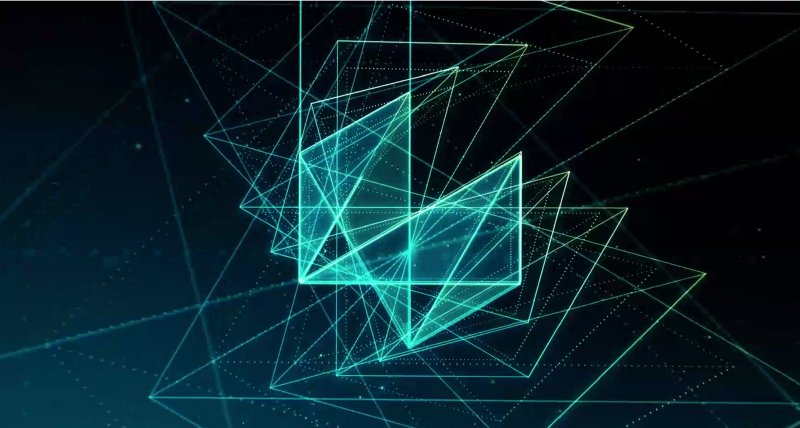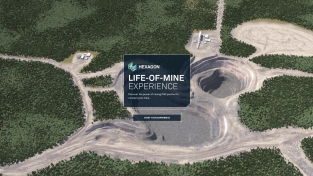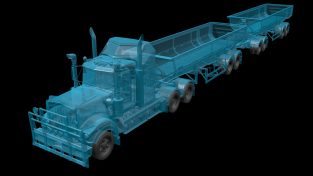Faced with a challenging problem statement and very little sleep, University of Arizona mining engineering students created a mine plan in 48 hours with a little help from Hexagon. It was good enough to finish third among 16 schools at this year’s SME/NSSGA Student Design Competition.
JS: Welcome to Hexagon Spotlight. This is your host, Jose Sanchez. Facing a challenging problem statement and very little sleep, University of Arizona mining-engineering students created a mine plan in 48 hours, with a little help from Hexagon. It was good enough to finish third among 16 schools at this year’s SME/NSSGA Student Design Competition. Thanks for tuning in. Hi, I’m Jose Sanchez from Hexagon Radio. A university of Arizona team of mining engineering students recently returned from Denver, Colorado and a third-place finish at the annual SME /NSSGA Student Design Competition. Today we have Edson Guebe, vice president of professional development at UA SME student chapter. Edson is with us to discuss the team’s experience. We appreciate you taking this time to join us, Edson.
EG: Thank you.
JS: Thank you for coming. Tell us about the competition: how many teams were involved, and how did you actually get qualified to be on the competition?
EG: They give you a problem statement, you create a solution for a real-world problem, and you submit that report. And I believe 14 schools—two from South America also participated—submitted reports, and only sixteen got selected. And this is the second year that we participated in it, so it was a great experience last year, and it continues to be a very great experience. We submitted a report, and the top six teams, as I mentioned, go to the second phase, and they have to present at the national SME conference in Denver.
First, on the first phase of the competition, we have 21 days in which only 35 hours can be worked by each element of the group. And we have six members: it was me, James Verbois, Chris Liddle, Caley Brooks, Fernando Gomez, and Steven Cole. So, we focused on different things. I was the leader of our team, and I was mainly focusing on creating a geologic block model, and I was in charge of the design of the pit as well, while all my colleagues took care of the other sections of our project.
It was a really exciting experience. First of all, having the opportunity to actually look at real data, interpret, filter that data, analyze it, and make sense out of it, because in our industry, we deal with large datasets. So, our first challenge was to filter that data and make sure we don’t have outliers, because it’s very common in huge datasets to have outliers. And once we did that, we submitted everything in MineSight—MinePlan—and it was just wonders from there. MinePlan does a great job interpreting data, and you can actually assign each column or each section to whatever you want to do, which makes it easier to interpret.
JS: That’s awesome. Yeah, I noticed in your presentation some of those slides you guys had with some of the visualization. You can see right away, see the outlier. You know, hey, something’s up. And I like the way you guys presented that. The problem statement itself, just to understand a little bit more of the process of the competition, the one that you received when you got to go to Denver for Phase 2, what did that sound like?
EG: Every year is different. This year, they provided us all of the assay data, and they treat it as if it was a brand-new site. So, we’re in charge of everything, from selecting equipment, analyzing what will be the best working hours for our operators, how many operators we’ll want to have in our site. And there was something very particular about this project is that our site was in charge of providing material to a cement plant that belongs to the same company. So, they were trying to sell the material that we produce at the lowest cost possible. And so, we were selling everything at cost, right? So, we were part of a big corporation, and we didn’t try to make any profits from it. All the profits will be made in the cement plant once the material is treated. And that was a real challenge for us because we are always used to talking about profit and internal rate of return, for example. And that was not the case. We just tried to keep costs to a minimum and make sure that we produced and met that requirement for the cement plant. And once we did that, we created a plan. Our site had several streams and wetlands. So, we needed to get the environmental licenses to operate. And we had to analyze which streams were over the greatest material in our property because not everything would be feasible because we would have to pay the engineer—or the corps of engineering for each feed that we disturb and each acre that we disturb for the wetlands.
JS: So, you had to take that into consideration—
EG: We had to take that into consideration. So, we were trying to mine everything we could, but only the things that are feasible and to justify it economically.
JS: How did you guys sort of distribute the hours while you were creating the life of mine plan? Were there any challenges or anything that you had to learn about each other, even as a team, while you were working together?
EG: Yeah. There were several challenges. As every team work, we had moments that we had disagreed, because that’s when you come up with more creative ideas, right? And it was always trying to challenge every single possibility that we think of. Whenever we came up with an idea, it was always analyzing, why? Would it work? And why we had run away from the traditional methods, and how would that impact our site economically and environmentally? We had moments that we worked pretty well I guess, and there were moments where the pressure would just—growing and growing, and we had to discuss several aspects of the project. But finally, we managed to keep our teams unified. And before we started the project, we had a Gantt chart in which we planned everything beforehand. So, we worked for a couple of months before, just to plan it out and to make sure we assigned tasks, and everybody knew once the project starts what would their task be.
JS: About the final presentation. I can imagine there’s some pressure. You just mentioned there’s already pressure while you’re working. But you’re going into the final presentation. You’re up against 15 other teams. How did you guys feel?
EG: We had 42 hours to work on the presentation. So, the problem statement from Phase 1 was completely modified on Phase 2, but we didn’t expect that. We were expecting some slight changes and small adjustments to be made. However, they gave us new geological constraints, so it forced us to start everything we did during Phase 1 all over again.
And, first, we panicked because it took us 21 days to complete Phase 1, and they asked us to do the same thing all over again in 42 hours. And we had to fit in sleep and eating in those 42 hours as well. So, it was very challenging. So, the first 30 minutes, we panicked.
After 30 minutes, we took another 30 minutes to analyze the problem and make sure that we knew exactly what was going on. And we went through the process with same approach. We started by analyzing the data, the new data provided. And some of the constraints that they gave us were not realistic. One of the things that you learn as an engineer is always propose further studies on the data that is provided. The more you can improve your level of confidence, the better. So, we looked at that dataset, and they had a constraint called “Lime-Saturation Factor,” and it was a very tight constraint. They had a standard deviation of plus/minus four, and we looked at the model with the results we’ve gotten. We’re like, “This is not realistic, so we have to propose a different approach to it.”
And that suggestion was actually taken as very innovative. And we were the only team that actually did the datasets and always looked at it and didn’t assume that the dataset was perfect. And the judge loved it because they said, “In real world, you should not trust any data set that you receive.” So, they loved it.
We worked several hours, some nights where we only had three hours of sleep. I remember the night before the presentation, I went to bed. It was around 4:30, and we had to be up at 7:00. No, 3:30, I’m sorry. And we had to be up at 7:00 and be ready at 7:00 because we could present, we could be first and present at 7:30. And my main job was to motivate my team, and I think that was my main approach at that point because I remember being—luckily, we were the last team to present. And I remember having my team, and I was talking to them. It was like, “We worked for 42 hours, so we know this data better than everyone in that room, and we should be confident of what we’re presenting.”
And “Thanks, God,” it was great. The judge loved it. And there was one judge that actually worked at a site, and he said that—he considered our presentation as being the best, but the difference maker was the report because some schools had a better, greater report, but it was great to hear from him who actually worked on a project months before and say that our approach was one of the best. And actually, he was offering to interview us and keep in touch with us just in case we wanted to work with him at some point. So, it was great feedback that we received from judges and even the committee that organized the event. So, I highly recommend this competition. And it always helped when you have a great software that actually gives you great results.
JS: How did Hexagon help you guys?
EG: Definitely. Hexagon, first of all, provided us licenses to operate the software remotely. That was a great advantage for us because we were in Colorado, and without those licenses, we wouldn’t be able to actually do the design part of it. So that was great. That was amazing. And we thank Hexagon for that and for their constant support. This is not the first year. I think this is the second year that actually Hexagon is coming in and helping us work with their software. And providing training before the competition was also excellent because they work for you, and it was just great at seeing the motivation was coming from the people who we’re in touch with. So, they were constantly motivating us. The software helped a lot because this is how we interpolated our geologic model. This is how we created the design, schedules, created haulage profiles, dam designs. if you don’t have the software to actually analyze that data, interprets the data, and gives you results, it’s hard for you to do such thing in such a short period of time. So, it was very, very, very great.
JS: How do you feel this is going to shape your career?
EG: My goal is to become a good planner. So being a mining engineer and a good planner in this industry, there are not a lot of software that actually do planning as well as the MinePlan. And luckily, once I graduate, I will be working with MinePlan again, as a long-range mine planner. So, this experience, this exposure, that I had during the competition actually helped me improve my skills, so once I get in the workplace, I can perform and exceed the expectation of my employers. So, it will play a crucial role in my career, I feel, because this is one of the 3-D modeling software that is complete, and we can understand the process from beginning to end. Even parts that I will not be as involved as creating a geologic block model, I understand now, And that will make my job easier in the future because if you understand how the entire process goes, you pretty much can perform because you have a bigger picture. So, I feel like it was a great exposure, and I highly recommend it to every mining engineer to understand, at least, how planning works. And having great software has helped a lot because before that, the work that we did in 42 hours would take six months. It’s a great exposure.
I would like to thank Hexagon because of how welcoming they were whenever we introduced the project. We had a meeting here, and we talked to some of the directors, and the marketing people were all great. They made sure that we were satisfied with the product, and we knew exactly what we would do whenever the project came up. And just understanding that you have your own real projects going on right now and making some room for us and actually worked with us in our preparation phase was more than just some financial support. It actually took you a lot of time, and we definitely appreciate that. I feel like you have such a welcoming environment, and everybody feels so welcome and part of the family once they start working with you. So definitely appreciate that. Thank you very much.
JS: Yeah, no, of course. Thank you very much. And we’re always happy to welcome you so thank you very much again for your time. A big thank you to our guest, Edson Guebe.
For more information about Miners of Tomorrow initiatives, visit our blog at hexagonmining.com. To listen to additional episodes or learn more, visit hexagonspotlight.com. Thanks for tuning in.
















